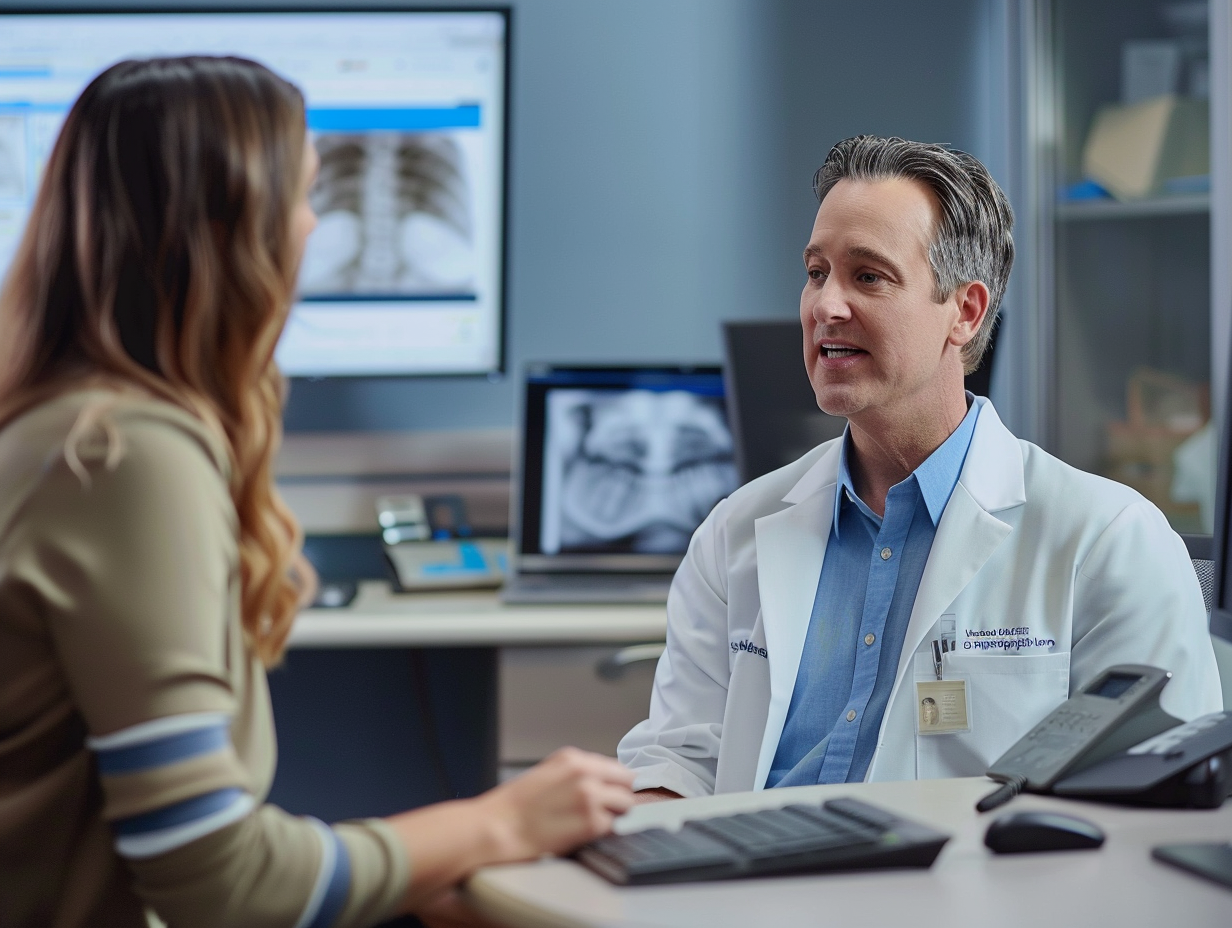In the current healthcare landscape, patient engagement has emerged as a crucial aspect of providing quality care. As healthcare organizations adopt various technologies to enhance patient engagement, they are faced with numerous regulatory challenges that must be carefully navigated. In this article, we will explore these challenges and discuss strategies for ensuring regulatory compliance in the realm of patient engagement.
Introduction to RIS Disaster Recovery and Patient Engagement
Patient engagement encompasses a range of activities that empower individuals to actively participate in their healthcare journey. From accessing medical records to virtual consultations, patients now have unprecedented control over their health-related information and interactions with healthcare providers.
One critical aspect of patient engagement is the use of Radiology Information Systems (RIS), which enable efficient management and retrieval of medical imaging data. These systems play a crucial role in modern healthcare by streamlining the process of storing and accessing radiological images, such as X-rays, MRIs, and CT scans, leading to quicker diagnoses and treatment decisions.
However, as these systems become increasingly integrated into healthcare workflows, the need for disaster recovery strategies becomes apparent. In the event of a natural disaster, cyberattack, or system failure, healthcare organizations must have robust backup plans in place to ensure the continuity of patient care and the security of sensitive medical data.
Overview of Regulatory Challenges in Patient Engagement
When discussing patient engagement, it is essential to understand the regulatory landscape that governs healthcare organizations' handling of patient data. The Health Insurance Portability and Accountability Act (HIPAA) and the General Data Protection Regulation (GDPR) are two primary regulations that guide data privacy and security.
Furthermore, regulations such as the 21st Century Cures Act and the Centers for Medicare and Medicaid Services (CMS) Interoperability and Patient Access Final Rule place additional requirements on healthcare organizations to facilitate patient access to their health information.
Compliance with these regulations is crucial for healthcare organizations to maintain patient trust and avoid hefty fines or legal consequences. HIPAA, enacted in 1996, sets the standard for protecting sensitive patient data and ensuring its confidentiality. Covered entities must adhere to strict guidelines regarding the use, disclosure, and safeguarding of protected health information (PHI).
The GDPR, implemented in 2018, applies not only to organizations within the European Union but also to those that offer goods or services to EU residents or monitor their behavior. It mandates clear consent mechanisms for data processing, strict breach notification requirements, and hefty penalties for non-compliance.
Understanding Key Healthcare Regulations
HIPAA is a key regulation that ensures the privacy and security of patients' protected health information (PHI). Covered entities, such as healthcare providers and health plans, must adhere to HIPAA requirements to protect patient confidentiality.
GDPR, on the other hand, focuses on data protection for citizens of the European Union. Healthcare organizations must comply with GDPR when handling the personal data of EU residents.
In addition to HIPAA and GDPR, healthcare organizations in the United States must also adhere to the HITECH Act. The Health Information Technology for Economic and Clinical Health (HITECH) Act was enacted to promote the adoption and meaningful use of health information technology. It also includes provisions to strengthen the privacy and security protections for health information established under HIPAA.
Furthermore, healthcare providers need to be aware of the Stark Law, which prohibits physicians from referring patients to receive "designated health services" payable by Medicare or Medicaid from entities with which the physician or an immediate family member has a financial relationship, unless an exception applies. Compliance with the Stark Law is crucial to avoid penalties and legal consequences.
Compliance Requirements for Patient Data Security
Ensuring patient data security is of paramount importance in patient engagement initiatives. Healthcare organizations must implement robust security measures, including encryption, access controls, and regular security assessments.
Compliance requirements often mandate the use of secure communication channels, such as encrypted email and secure messaging applications, to protect sensitive patient information during transmission.
Moreover, healthcare providers are required to conduct regular training sessions for their staff to educate them on the latest security threats and best practices for safeguarding patient data. This ongoing education is crucial in maintaining a vigilant and knowledgeable workforce that can identify and respond to potential security breaches effectively.
Additionally, compliance standards may also necessitate the implementation of multi-factor authentication protocols to add an extra layer of security when accessing patient records or sensitive information. This added authentication step helps ensure that only authorized personnel can access and handle patient data, reducing the risk of unauthorized access or data breaches.
Navigating HIPAA Regulations in Patient Engagement
As healthcare organizations strive to enhance patient engagement, they must navigate the intricacies of HIPAA regulations. Healthcare providers need to strike a balance between providing patients with convenient access to their health information while maintaining PHI security and privacy.
To achieve this, healthcare organizations must implement proper authentication mechanisms, such as two-factor authentication, to ensure that only authorized individuals can access patient data.
Furthermore, it is essential for healthcare organizations to conduct regular risk assessments to identify potential vulnerabilities in their systems and processes. By proactively addressing these vulnerabilities, organizations can better protect patient data and comply with HIPAA regulations.
Additionally, training staff members on HIPAA compliance and the importance of safeguarding patient information is crucial in maintaining a culture of privacy and security within the organization. Regular training sessions can help reinforce best practices and ensure that employees are up to date on the latest regulations and guidelines.
Strategies for Ensuring Regulatory Compliance in RIS
When using RIS systems for patient engagement, healthcare organizations must adopt strategies that align with regulatory requirements. Regular risk assessments and vulnerability scansshould be conducted to identify potential security gaps and address them promptly.
Implementing robust access controls and user permission settings within RIS systems can help restrict data access to authorized personnel only, reducing the risk of unauthorized disclosures.
Furthermore, it is essential for healthcare organizations to stay updated on the latest regulatory changes and compliance standards related to RIS systems. This can be achieved through continuous training and education programs for staff members involved in handling patient data. By ensuring that employees are well-informed about compliance requirements, organizations can mitigate the risk of non-compliance and potential penalties.
Another important aspect of ensuring regulatory compliance in RIS is the implementation of encryption technologies to protect sensitive patient information during transmission and storage. Encryption helps safeguard data from unauthorized access and ensures that patient confidentiality is maintained at all times. Healthcare organizations should prioritize the use of encryption protocols that comply with industry standards and guidelines to enhance data security within RIS systems.
Best Practices for Secure Patient Communication
Secure patient communication is a cornerstone of effective patient engagement. Healthcare organizations should establish clear policies and guidelines for secure communication methods, emphasizing the importance of encrypted channels and secure file sharing.
Furthermore, staff education and training programs should be conducted to raise awareness about potential risks and best practices for communicating with patients securely.
It is essential for healthcare providers to prioritize patient privacy and confidentiality when communicating sensitive information. Implementing two-factor authentication and regular security audits can help mitigate the risks of data breaches and unauthorized access to patient information. Additionally, using secure messaging platforms that comply with HIPAA regulations can provide an extra layer of protection for both patients and healthcare providers.
Moreover, healthcare organizations can enhance secure patient communication by offering patients access to secure patient portals where they can securely message their healthcare providers, schedule appointments, and access their medical records. By empowering patients to actively engage in their healthcare journey through secure communication channels, healthcare providers can improve patient satisfaction and outcomes while maintaining the highest standards of data security and privacy.
Implementing Effective Data Backup and Recovery Solutions
In the context of patient engagement, reliable data backup and recovery solutions are critical to ensure continuity of care. Healthcare organizations should implement robust backup mechanisms that protect patient data from data loss incidents, such as hardware failures or cyber-attacks.
Frequent testing of backup and recovery procedures is essential to validate the effectiveness and efficiency of these solutions, helping healthcare organizations recover critical data swiftly in the event of an emergency.
Moreover, it is imperative for healthcare providers to consider the scalability of their data backup and recovery solutions. As patient data continues to grow exponentially with the adoption of electronic health records and telemedicine, healthcare organizations must ensure that their backup systems can accommodate this increasing volume of information. Scalable solutions not only future-proof the organization's data management strategy but also ensure seamless operations during periods of rapid expansion or increased data processing requirements.
Additionally, compliance with data protection regulations, such as the Health Insurance Portability and Accountability Act (HIPAA), is paramount in the healthcare industry. Data backup and recovery solutions must adhere to these regulations to safeguard patient privacy and maintain legal compliance. By implementing solutions that meet regulatory standards, healthcare organizations can mitigate the risk of data breaches and potential legal repercussions, thus fostering trust with patients and stakeholders.
Continuous Monitoring and Audit Procedures
Ongoing monitoring and auditing of patient engagement initiatives and systems are vital to maintain regulatory compliance. Regular reviews of access logs, system activity, and security measures help identify and address potential vulnerabilities before they can be exploited.
Furthermore, periodic third-party audits can provide independent assessments of an organization's compliance adherence and identify areas for improvement.
It is essential to establish a robust incident response plan that outlines the steps to be taken in the event of a security breach or data compromise. This plan should include protocols for containing the incident, assessing the impact, notifying relevant stakeholders, and implementing remediation measures to prevent future occurrences.
Moreover, conducting regular training sessions for employees on data security best practices and compliance requirements can help reinforce a culture of vigilance and accountability within the organization. By empowering staff members to recognize and report suspicious activities, companies can enhance their overall security posture and reduce the risk of data breaches.
Conclusion
Navigating regulatory challenges in patient engagement requires a comprehensive understanding of healthcare regulations and their implications. By adopting proactive strategies for compliance and implementing robust security measures, healthcare organizations can ensure the successful integration of patient engagement technologies while safeguarding patient data and privacy.
As you consider the complexities of patient engagement and the importance of regulatory compliance, remember that the right technology can make all the difference. AbbaDox offers a cloud-based platform designed to optimize radiology workflows, bringing together all your imaging center operations in one place. With our solution, you can enhance patient engagement while maintaining compliance with ease and efficiency. Don't let regulatory challenges slow you down. Meet with a product consultant today and discover how AbbaDox can streamline your practice's operations, ensuring you stay ahead in the ever-evolving healthcare landscape.







